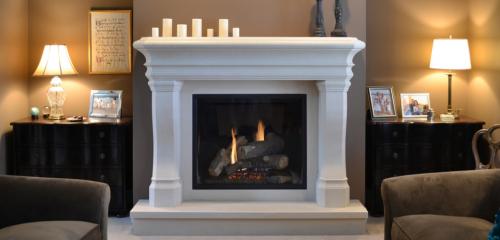10 Things Never to Burn in your Fireplace

Chilly winter evenings are perfect if you get to spend the time in front of a roaring fire, hot cocoa, and submerging yourself in a good book. However you choose to spend the time, careful consideration of what to burn in the fireplace is one way to make safer choices. Nowadays, we don’t have to build fires to survive but to create a mood. Choosing the right wood for your fireplace is really necessary, depending on the type of fireplace, you may need to go with the chopped or dry logs. You can find plenty of professional installers of fireplaces in Denver. It is essential to know what should you burn and what may harm you and put your life in danger.
Treated or Coated wood
When you burn treated or coated wood, toxic chemicals can be released into the air which might harm your lungs. Woods are treated to resist rot or insects with the help of arsenic, while stained, painted, varnished woods contain other chemicals, and all these chemicals when burned create toxic fumes. Nix on plywood, too because adhesives are used during manufacturing release toxic fumes.
Cardboard
Cardboards are often used to start a fire because they usually catch fire easily. However, next time you want to get a fire roaring don’t use cardboards. They are often treated with chemicals. Instead, use certified fire starters usually available at camping-supply stores or use small splinters of wood.
Lighter Fluid
It is not advised to use lighter or charcoal fluid or any other type of accelerant to ignite the fire in a fireplace. They are made for very specific uses and should not be used to fuel the indoor fire as they contain toxic fumes like methanol and petroleum-based chemicals. The accelerants also create extra-hot fires which may damage your chimney lines.
Magazines and colored paper
The inks used to compose colorful magazine layouts and colorful sheets when burned, release toxic fumes. If your fire needs a boost, you can use a couple of plain black-and-white newspapers, rolled tightly, and placed between small bits of wood kindling. It is never advised to use gift wraps, magazines, or coupons in the fireplace. Not only do they create unwanted fumes, but bits of burning paper can float up through the chimney and may be the reason to cause a fire.
Wet Firewood
The best thing you can do is to keep your firewood dry to make it instantly burn. Dry wood is easier to light than wet wood. More importantly, the moisture in damp firewood makes it smoke and leads to rapid creosote buildup in the chimney liner. One of the leading causes of chimney fires is creosote buildup. While creosote isn’t totally avoidable, you can reduce the risk of it by getting your chimney cleaned annually.
Allergen Producing Brushwood
Avoid picking for sticks that you cannot identify. In winters, when plants lose their leaves, it can be difficult to tell if you’re gathering harmless vines or poisonous ones. It can be extremely dangerous if burn the woody vines from poison sumac, poison ivy, or plants that contain urushiol that can cause rashes on contact. Fumes from burning plants that contain urushiol can trigger severe allergic respiratory reactions.
Evergreen Wood
Evergreen trees such as cedar, pine, and spruce contain resins that catch fire quickly and cause a hot flame. These trees burn so fast that the fire will fizzle out quickly and their high resin content can leave heavy creosote deposits in your chimney, which later on can cause chimney fires. You can also build or get an outdoor fireplace in Denver.
Wood Palettes
Finding a way to re-use wood palettes is an awesome idea, just don’t burn them! Discarded shipping pallets are popular materials for crafters and resourceful DIYers, but many pallets have been treated with the chemical pesticide methyl bromide to prevent the spreading of the emerald ash borer, a beetle that wreaks on living ash trees. Never burn a palette that has ‘MB’ marked which indicates it’s been treated with chemicals.
Trash
Many people do it, tossing an empty plastic-foam cup or a paper plate on an open fire. Most products for consumers contain chemicals that produce hazardous fumes when burned. One of the worst things in your trash is plastic, and when burned it releases a toxin called dioxins. And if dioxin’s inhaled it causes the risk of respiratory ailments, headaches, internal organ damage, and even cancer.
Leaves
Igniting the fire with a base of dry leaves might sound like the perfect idea, but it’s not. Firstly, leaves burn really quickly and the sudden change in temperature can crack the chimney fumes which is why it’s not the best to get your fireplace going. Wet leaves will do the opposite, they’ll burn slowly whilst creating a ton of smoke.
Post Your Ad Here
Comments